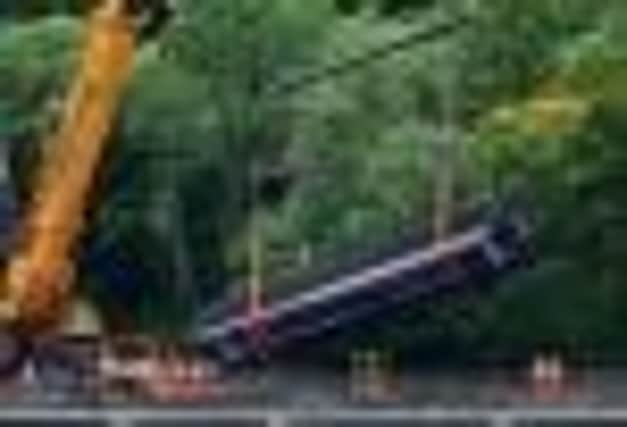Scottish rail chiefs ordered to pinpoint landslide hotspots to cut delays


The most vulnerable sections of track are to be identified so more rapid action can be taken when landslips block lines.
Transport minister Keith Brown told The Scotsman he wanted a “much more structured” analysis of the problem, following detailed research into landslips on major roads seven years ago.
Advertisement
Hide AdAdvertisement
Hide AdHis comments come after the Office of Rail Regulation (ORR) took formal safety enforcement action requiring Network Rail to improve its assessment of landslip risks. The firm, which is responsible for tracks, has also been told to improve its response to incidents.
In some of the latest landslides, two ScotRail trains hit debris within hours of each other on 18 July. More than 100 passengers and crew escaped injury in the incidents, which happened after torrential rain near Falls of Cruachan in Argyll and between Dunfermline and Rosyth in Fife. The latter train derailed.
There were also at least three landslides in June, including an incident where a 24-wagon freight train was derailed near Tulloch, east of Fort William.
Another landslide happened on the same line south of the Crianlarich, while the east coast main line was hit at Prestonpans in East Lothian. In April, flooding caused a landslide between Slochd and Carrbridge, south of Inverness.
In the most serious recent incident, two years ago, a ScotRail train hit two large boulders near Falls of Cruachan and was only saved from plunging down a 50ft embankment by trees.
The rocks fell on to the track from below a 120-year-old wire system installed on the steep mountainside above the line to protect it from landslips.
The previous trunk roads research found substantial sections were at potentially high risk of landslides.
However, a subsequent study by the Scottish Government’s Transport Scotland agency concluded that preventing landslips would cost billions of pounds and cause unacceptable environmental damage.
Advertisement
Hide AdAdvertisement
Hide AdIt recommended efforts were focused on minimising disruption after landslides happened.
The agency is building a diversion route to bypass Scotland’s worst landslide blackspot, at the Rest and Be Thankful pass on the A83 in Argyll.
Mr Brown said: “Like the roads analysis, the same thing should happen in a much more structured way for the railway.”
A Transport Scotland spokeswoman said: “The Scottish Government is acutely aware of the difficulties adverse weather can bring to our transport networks.
“That is why, as part of our resilience efforts, the transport minister has met with Network Rail and also the rail regulator, who have both assured him that rail safety is the number-one priority.”
A Network Rail spokesman said: “We are currently in discussion with the ORR regarding the management of earthworks during periods of extreme weather.
“We are confident we can put in place even more robust plans for the management of our infrastructure.
“Safety is Network Rail’s number-one priority and, between 2009 and 2014, we will have invested more than £90 million on projects designed to limit the potential for rockfalls and landslips on our railway.”